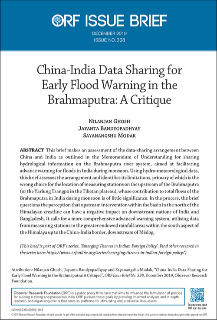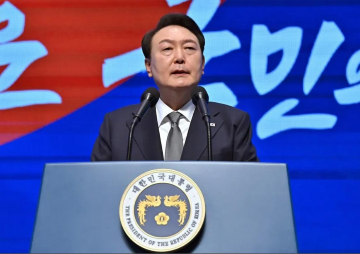
More than
half of the population worldwide lives in cities, making urban centres critical to socioeconomic growth and development. However, rampant urbanisation has led to unequal distribution of resources and a lopsided development approach that ignores the specific needs of women. Despite projections of
two-thirds of the population living in cities by 2050, urban development remains
exclusive of women’s perspectives and needs.
With the G20 agenda prioritising
women-led development, the G20 nations can play a pivotal role in bringing all the stakeholders to deliberate upon challenges and opportunities in building inclusive and women-friendly cities. India’s G20 presidency can play a huge role in reinvigorating policies and practices that focus on women and their challenges while living in urban spaces.
With increasing urbanisation, people are expected to have a comfortable lifestyle. Basic amenities such as water, health, and sanitation should be easily accessible. However, gender disparities abound in the distribution of these resources.
With the G20 agenda prioritising women-led development, the G20 nations can play a pivotal role in bringing all the stakeholders to deliberate upon challenges and opportunities in building inclusive and women-friendly cities.
One of the primary reasons behind gender inequality in cities is that modern cities are planned mainly
by men and for men, thus sidelining the needs of women. The cities have been traditionally designed on the premise that a woman’s role is primarily confined to the household, barring their need to access the immediate neighbourhood. This patriarchal approach, while shaping the power dynamics between men and women, has also taken away the fundamental right of women to live and thrive in a safe and inclusive outdoor environment.
Including more women in decision-making roles to identify shared concerns and build integrated solutions will need a paradigm shift in approaches to policymaking. This calls for a policy focus on optimum resource allocation and equitable distribution, ensuring easy, safe, and affordable access to all.
Focus areas of development
The intervention of civil society and policymakers on specific parameters can help build gender-responsive cities that accommodate the concerns of all citizens. These would include:
Building safer cities: A safe city must ensure everyone can conduct their lives without real or perceived fear. Women, one of the most vulnerable groups in society, face violence in physical and cyber mode, making it difficult for them to access opportunities that come with urbanisation. For instance, due to poorly lit streets and a lack of women-friendly mobility systems, women cannot actively participate in the workforce. Only
27 percent of women participate in the workforce in India as compared to
79 percent of men. With cities such as Mumbai coming up with the concept of
night markets, it is essential to realise that certain sections of the population, particularly women, won’t be able to benefit from it equally, given the risk of safety.
Women, one of the most vulnerable groups in society, face violence in physical and cyber mode, making it difficult for them to access opportunities that come with urbanisation.
Better street lighting, women-friendly transport systems, and behavioural change programmes that help people understand that the onus of safety is not on women but on society as a whole will surely improve women’s access to safer cities. Counselling sessions for men, sensitising them about how women feel if a certain social behaviour is practised, can trigger an eventual change in their mindset towards women’s needs. Building technology systems such as the
Safetipin app helps women map safe areas and take necessary actions in emergencies by collating a list of important contacts, GPS tracking and so on, thus, trying to make streets safer.
Building gender-inclusive jobs: How cities have developed has impacted the kinds and nature of job opportunities available in the cities. Most of them are male-dominated, such as the platform economy jobs of delivery agents and those at vast construction sites, leaving less space for women to intervene. Moreover, with an increase in the number of households in cities, women are devoting most of their time to home and caring work, thus, leaving less time for them to do a job. In this scenario, women professionals are burdened with dual work roles, impacting their physical and mental well-being. Furthermore, the social tendency to discourage urban women from working after marriage has generated a trend of ‘discouraged drop-outs’, leaving them out of the workforce.
Data suggests that 10 percent increase in women’s workforce participation rate can add US$ 770 million, approximately 18 percent, to India’s GDP. Teaching men to shoulder family responsibilities, making workspaces women-friendly, promoting women to leadership positions, and diversifying the availability of jobs can go a long way in improving the situation.
Building technology systems such as the Safetipin app helps women map safe areas and take necessary actions in emergencies by collating a list of important contacts, GPS tracking and so on, thus, trying to make streets safer.
Role of women in urban governance: Women’s participation in urban planning and governance has been abysmally low, severely impacting how the cities are designed and maintained. With less women representation in leadership positions, the shared concerns never reach the policy table.
Having women at the top can have a domino effect in society, making other women aspirational of the positions they can reach and the impact they can create. Celebrating the achievements of women, for instance, by
building statues of those who have worked to bring a positive change in society, can motivate many others. Cities like
Athena, Bogota, Nairobi, Dakar, and San Francisco that have had female leadership have witnessed greater socio-economic and sustainable development.
Developing gender-sensitive infrastructure: Women hold only
10 percent of the highest ranks globally in architecture and urban planning offices. With women left out of city planning institutions, city planners ignore the needs of women and the challenges they face. The lack of proper sanitation facilities, inadequate street lighting, and the lack of safe walking and cycling paths and leisure places have relegated women away from the social life of the cities.
Globally,
one in three women do not have access to safe toilets. Building toilets for women and places to breastfeed and baby changing stations improves the turnout of women on the streets. Improving access to clean water will also improve overall health for women as globally, in
eight out of 10 households, women are responsible for collecting water for the family.
The lack of proper sanitation facilities, inadequate street lighting, and the lack of safe walking and cycling paths and leisure places have relegated women away from the social life of the cities.
Policymakers need to adopt a feminist approach to urban development.
Feminist urbanism seeks to understand and integrate the concerns of women and other gender and sexual minorities across caste, class, age differences, disabilities, etc. Creating a city on the lines of feminist urbanism refers to constructing compact and mixed-use neighbourhoods, inclusive streets focusing on pedestrian needs and building other critical urban infrastructure. The concept of a
15-minute city, i.e. where everything needed will be available within a walkable distance of 15 minutes, is attracting the interest of planners even in India. However, for stray examples such as
Magarpatta, a city in Pune, the concept has failed to move beyond rhetoric.
Conclusion
Building global partnerships to aid gender mainstreaming in urban spaces can prove fruitful. India has a chance to further this cause as it assumes the G20 presidency. The Urban 20 grouping can bring urban policymakers from the -20 nations to deliberate on women’s rights and evolve gender-inclusive development processes to help cities attain the 2030 agenda for sustainable development holistically.
The views expressed above belong to the author(s). ORF research and analyses now available on Telegram! Click here to access our curated content — blogs, longforms and interviews.



 More than
More than  PREV
PREV

